How to water flowers when you go on vacation?
During a long absence of the owners due to a business trip or vacation, the plants suffer from a lack of water. However, it is possible to save flowers without watering if you take care of them before you travel.
Which flowers tolerate drought more easily?
Various factors affect the survival of indoor pets without moisture.
- Plant type.
Flowers in the home collection can vary greatly in origin, appearance and developmental characteristics. Most houseplants can be safely left for a week without watering, after moistening well beforehand. Prolonged lack of irrigation can negatively affect the health of indoor pets.
Herbaceous plants in winter are watered on average once a week, and during the period of active growth or flowering - once every 3-4 days. Orchids have about the same irrigation regime. Agave, hoya, not so demanding for watering, sansevieria, yucca and aspidistra - they are content with hydration every two weeks. Popular asparagus and chlorophytum tolerate drought well at low temperatures due to the presence of water in the bulbs. Cacti and succulents are left without watering for a month if they are in a dormant period, and the ambient temperature is from 5 to 10 degrees Celsius. For many representatives of this species, such content is the norm.
Advice
"Plants-water-lovers" hardly tolerate prolonged absence of watering. These include, for example, azalea, streptocarpus, primrose, calathea, cyclamen and episode... It is better to hand them over to someone else for leaving during a long absence. If trips from home are frequent and long, it is worth choosing less moisture-loving plants for growing. Flowers with tough leaves and a thick trunk will easily tolerate an anhydrous period of up to 2 weeks.
- Temperature and humidity.
In a warmer room with low humidity, pets will begin to suffer from a lack of moisture much earlier. If a long trip takes place in winter, it is appropriate to reduce the temperature of the central heating radiators. Additional containers of water in the room will help increase the humidity.
How can you help your plants survive the time without watering?
If there is a long absence of the owners in order to preserve indoor flowers, you should pay attention to such simple tips.
- Better to keep pets away from windows. On the windowsill in summer without water, they will suffer from the sun, in winter - from heating batteries. If the curtains are thick enough, you can simply draw them up during the warmer months. Plants located on the south, southeast or southwest window are best rearranged. In the off-season, it is appropriate to turn off the heating or remove flowers away from the heat source.
- Remove inflorescences and buds a few days before departure. There will be no one to admire the beauty, and flower brushes take away a lot of precious moisture from the plant.
- Cover tightly with a transparent jar small flowers that like high humidity and dry out quickly. For large plants, use large plastic bags. Fasten the ends with an elastic band so that there are no large gaps. This will prevent moisture from evaporating quickly.
- Be sure to water the day before or on the day of departure. The flower is not irrigated from above, but bottom irrigation is used. The plant is placed in a container of water for 10-15 minutes. When the soil is well saturated with water, the flower is taken out and the excess liquid is allowed to drain. Plants watered in this way retain moisture longer.
- Close windows and doors. Place containers with water near the flowers. This will help to avoid drafts and keep moisture around them.
- Do not feed the flowers 2-3 weeks before departure. It is completely inappropriate to activate life processes at this time.
- Remove damaged and dry leaves. Check for pests or signs of disease. If necessary, treat the flowers with the necessary preparation, because a plant weakened without water becomes more vulnerable. It is better to do this 1-2 weeks before the trip.
- Lay a layer of expanded clay or gravel at the bottom of a large container. Place small pots with moisture-loving plants inside (they are pre-watered). Pour water onto expanded clay or gravel so that it does not touch the bottom of the flowerpots with pets. The increased humidity will help the plants to survive the time without watering more easily.
Advice
If you often have to leave your favorite indoor flowers unattended, it is better to plant them in clay pots. Such containers retain moisture better than plastic containers.
Remote humidification methods
You can save indoor plants without watering for a long absence in several ways, using "crazy hands" and your own imagination.
- Moisturizing with a wet cloth.
On a table located far from the window, put a thick oilcloth to protect the surface from moisture. Place a piece of wet, thick cloth on top, such as an old baby blanket or a flannel diaper. Place a container with water nearby. Lower the ends of the matter into a vessel with liquid. Place pots with well-watered flowers on a wet cloth (use pots without supports and with drainage holes). Water from the container will gradually fall to the roots through the bottom of the flowerpots and water your green favorites. You can put the plants in the bathroom, if there is enough light, then the film is not used. With this method, you can leave the flowers without irrigation for 2-3 weeks. Watering flowers while on holiday using a wet cloth is good for medium-sized, moisture-loving plants.
Make a thin hole in the cork with an awl, fill the container with water. Twist the bottle and insert it upside down into a flower pot, pressing it into the ground by 2-3 cm. Water from a small hole will drop by drops into the flowerpot and water the plant. On the other hand (in the bottom), you also need to make a hole so that air can enter the container instead of the leaked liquid. In advance, it is advisable to prepare several bottles with holes of different diameters and experimentally determine what size of the hole will be optimal. This is a great opportunity to water flowers when you go on vacation, you just need to correctly calculate the water rate so as not to overmoisten the plant. The disadvantage is that each flower will need its own "watering can" - you need to stock up on bottles. This method works well for large specimens.
- Wick irrigation.
Flower pots are placed on the floor. Pour water into a large plastic container and place it next to the plants. Dishes with liquid should be higher than flowers - for example, on a table or chair. Cuts are made from fabric or bandage, you can use special synthetic wicks, which are sold in flower shops. One end of the fabric is placed in a container with water, and the other is fixed on the surface of the soil in a flower pot. The wicks are gradually fed with water from the dishes and supply the plant with moisture. For large and moisture-loving flowers, more cuts are used. On average, one wick is used for one flowerpot with a diameter of about 10 cm; with a pot diameter of 30 cm, 4 such fabric cuts may be needed. This method of watering will keep the flowers up to two weeks.
- Special drip irrigation device.
This system will automatically water the flowers at regular intervals. It is better to buy it in advance to check the efficiency of the installation. First, the risk of getting a low-quality product remains. Secondly, it is necessary to adjust watering taking into account the requirements of pets.
Advice
Also on sale pots with automatic watering... They are not cheap and are not suitable for all flowers, but they can be an alternative for those who are willing to spend extra money for the comfort of their plant.
So, during a long absence of the owners, indoor flowers can quite comfortably live without watering. Preparing your plants for the dry season and following a few simple tips will help you avoid stress.
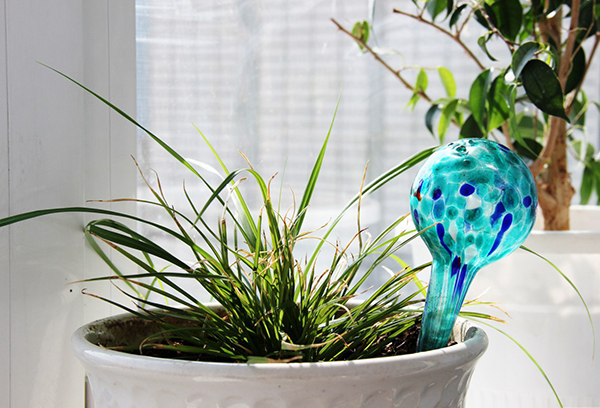
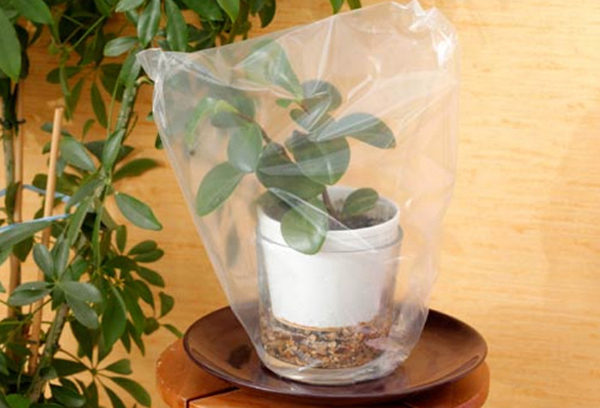
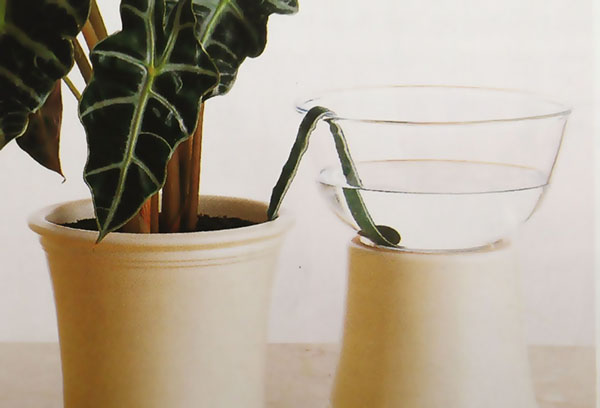
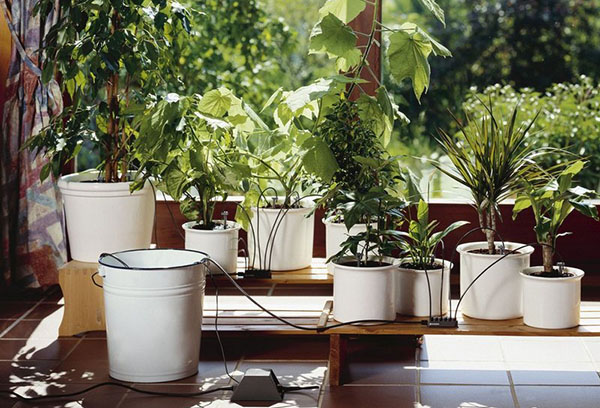
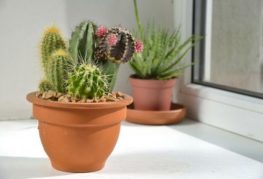
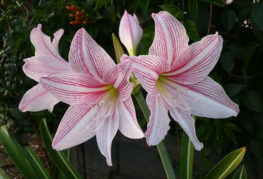
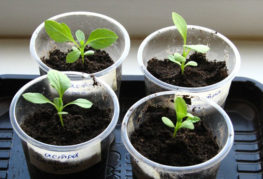
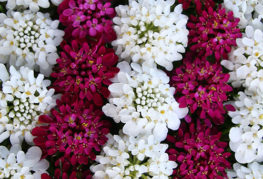
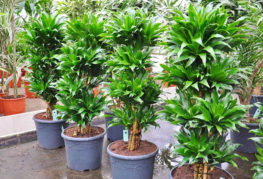
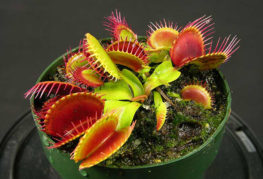
and will be published shortly.